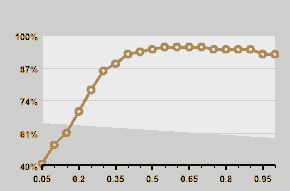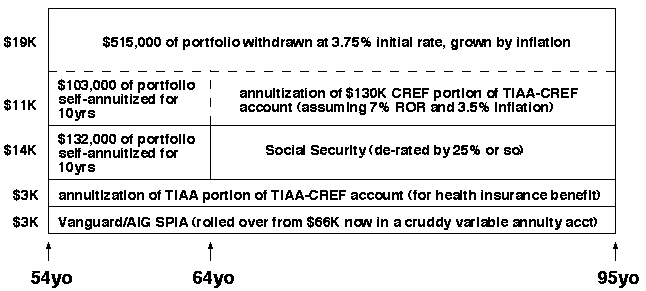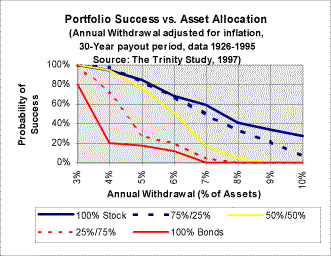L
Lovely Rita
Guest
I've run FIRECALC several times with my proposed plan, but it does not look very optimistic.
____________________________________
"Your plan is to spend $30,000 a year, or 4.00% of your starting portfolio.
FIRECalc looked at the 106 possible 30 year periods in the available data, starting with a portfolio of $750,000 and taking out $30,000 the first year of your retirement, and the same amount after adjustments for inflation each year thereafter.
(FIRECalc assumed your retirement portfolio is in investments that perform about like the US stock market as a whole. Mutual funds report each year how well they have performed relative to the stock market as a whole. Such information can help you see how relevant this information might be to your situation.)
The key result: a 78.3% Success Rate"
_____________________________________
I have been aiming to hit three quarters of a million dollars in my nest egg, only because I need 30K a year from it, and "everybody sez" 4% is a reasonable SWR.
This will all be in all in a tax-deferred account, made of mutual funds and fixed investments with a 50/50 ratio. The expenses run less than 1% annually.
So why is FIRECALC sooo pessimistic? I am gonna cry. It will take me 3 more years of work to achieve what I THOUGHT would be the goal of $750K, but I need more assurance than 78% chance of success. I am so conservative, I am not even counting SS, but it looks like FC is even more conservative than me.
I am so conservative, I am not even counting SS, but it looks like FC is even more conservative than me.

____________________________________
"Your plan is to spend $30,000 a year, or 4.00% of your starting portfolio.
FIRECalc looked at the 106 possible 30 year periods in the available data, starting with a portfolio of $750,000 and taking out $30,000 the first year of your retirement, and the same amount after adjustments for inflation each year thereafter.
(FIRECalc assumed your retirement portfolio is in investments that perform about like the US stock market as a whole. Mutual funds report each year how well they have performed relative to the stock market as a whole. Such information can help you see how relevant this information might be to your situation.)
The key result: a 78.3% Success Rate"
_____________________________________
I have been aiming to hit three quarters of a million dollars in my nest egg, only because I need 30K a year from it, and "everybody sez" 4% is a reasonable SWR.
This will all be in all in a tax-deferred account, made of mutual funds and fixed investments with a 50/50 ratio. The expenses run less than 1% annually.
So why is FIRECALC sooo pessimistic? I am gonna cry. It will take me 3 more years of work to achieve what I THOUGHT would be the goal of $750K, but I need more assurance than 78% chance of success.




